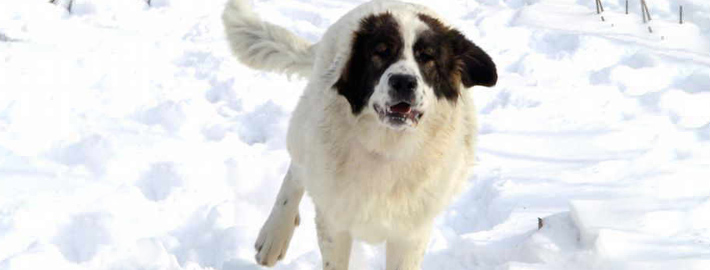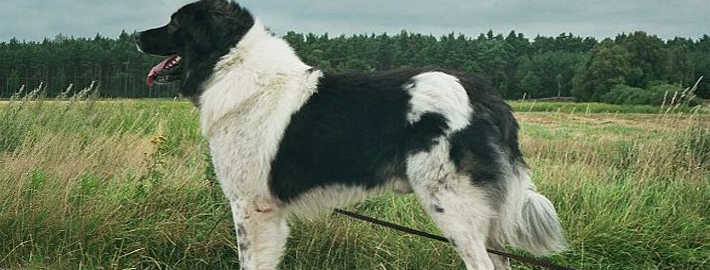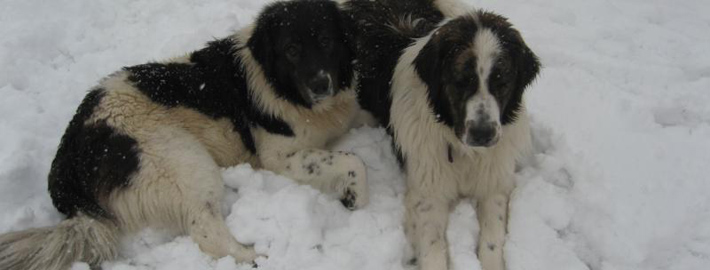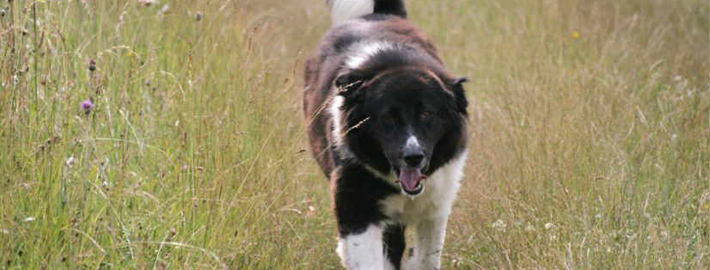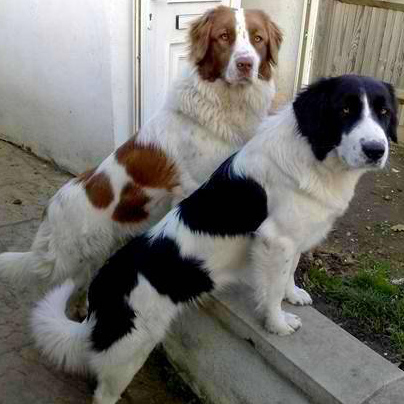What makes the Karakachan Unique?
The Karakachan is a giant purebred known for being aggressive, alert, cheerful, courageous, detached, independent, intelligent, loyal, and social. The most common colors for Karakachans are black, tricolor, and white. To keep it healthy, it will need to get exercise regularly. The Karakachan commonly participates in guarding.
Breed Groups
Page Contents
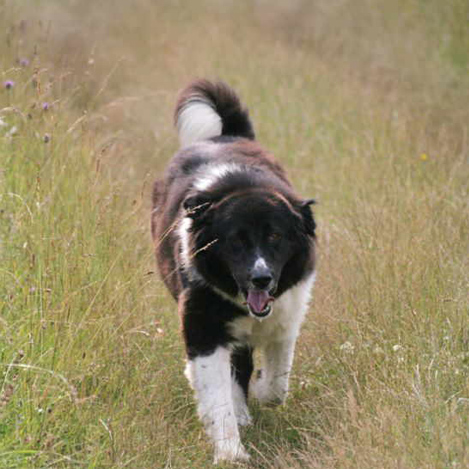
SnapShot
| Size: | Males – 65 to 75 cm (26 to 30 inches) Females – 63 to 72 cm (25 to 28 inches) |
| Weight: | Males – 45 to 57 kg (99 to 125 pounds) Females – 40 to 52 kg (88 to 114 pounds) |
| Origin: | Bulgaria |
| Life Span: | 12 – 14 Years |
| Colour: | White with Black or Brown spots on the face and at the base of the tail |
| Litter Size: | 5 to 10 puppies |
Is the Karakachan Right For You?
The Karakachan is an independent working guard dog, and is not happy when it is not working. It will become devoted to its master, and will usually bond with any children in the family as well. However, it is not a home dog – it simply must be on a farm, where it may attack intruders. The Bulgarian Shepherd, if socialized from a young age, will get along well with any smaller pets in the family, from rabbits, to cats to chickens.
In 5 Words
- Intelligent
- Independent
- Dominant
- Brave
- Vigilant
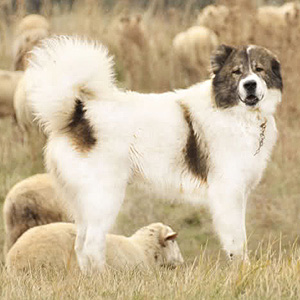
Characteristics
Learn About the Karakachan
Description
General Description
The Bulgarian Shepherd, officially known as the Karakachan, is a massively large dog, very muscular. The dark eyes are deeply placed, and can be quite expressive. The muzzle is medium in length, also massive and broad. The nose is black, with broad nostrils, the teeth strong, with a scissors type of bite. The ears are highly placed on the head. The chest is broad and deep. The tail has a sickle curve. Even more than its appearance, the Bulgarian Shepherd is noted for its slow movement. The coat is medium long to long, although the face itself has short hair, as do the legs and feet.. The coat color varies, mostly white with large, asymmetrical black or brown spots on the face and at the base of the tail. Although some Bulgarian Shepherds have all white or all black coats – these are not considered to be pure bred dogs. Females are smaller and much lighter than the males.
Short History of the Karakachan
The Karakachan dog is one of Europe’s oldest breeds. It is a typical Mollos, created for guarding its owner’s flock and property; it does not hesitate to fight wolves or bears to defend its owner and his family in case of danger. Its ancestors started forming as early as the third millennium BC. The Karakachan dog is a descendant of the dogs of the Thracians, renowned as stock-breeders. The dog is named after the Karakachans. Due to their conservative stock-breeding traditions, they managed to preserve some of the oldest breeds of domestic animals in Europe – the Karakachan sheep, the Karakachan horse, and, of course, the Karakachan dog. It is with this name that the Karakachan dog appears in the works of some of the classics of Bulgarian literature, namely Yordan Yovkov, Georgi Raitchev and Yordan Radichkov. In 1938 H.B. Peters wrote about it in the German cinologycal magazine “Zeitschrift für Hundeforschung”. The first researcher of the breed was Todor Gajtandjiev, who proposed the standardization of the breed in the 1970s. The Karakachan dog’s bravery and dignity, together with its incredible loyalty, make this dog an invaluable friend and helper.
Temperament
The Karakachan dog is an independent working guard dog. When it is used as such and on the job, aggressiveness is not strongly expressed, but at the same time the dogs are reserved in their attitude toward strangers and demonstrate distance by warning growling and eventual attack. Toward predatory animals (often even toward dogs) aggressiveness increases. The Bulgarian Shepherd Dog is alert, easily adapted to the environment, adequately reacting in situations in which it is involved. Toward its master or handler it demonstrates devotion and fidelity. Its basic sensuousness via sense of smell, hearing and sight is very well developed. Usually tolerant to the children they have been raised with, they love and bond with all people and children within their own family. Those bred and raised to work cannot be pulled from their jobs on the weekends and make good home companions who will lie on the sofa all day, go for walks in the noisy town among people and cars, and run joyfully in parks together with other dogs, and returned to work after the weekend is over. If they are going to be raised to work as flock guards that is what they will be. The BSD is a true working dog with great working characteristics, combined with stabilized exterior appearance. This dog defends pets, guards the farm, and looks for his master and family’s safety.
Caring for Your Karakachan
Grooming & Bathing
These dogs have a thick coat and it requires brushing several times per week. Their coats should be brushed about every 2-3 days. They also have pendant ears which means that you will need to clean their ears regularly to avoid ear infections. Bathe only when necessary.
Exercise & Training
This breed needs plenty of daily exercises and a job to do. They should be taken on daily, long, brisk walks.

